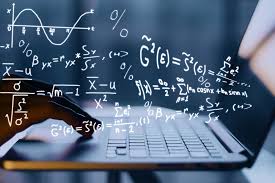
The Basic Mathematics for Computing course provides students with essential mathematical foundations required for computer science and information technology. It covers core topics such as logic and set theory, number systems, algebra, functions, matrices, probability, and basic statistics. The course also introduces mathematical reasoning, problem-solving techniques, and algorithmic thinking, which are critical for programming, data structures, and computational theory. Emphasis is placed on applying mathematical concepts to real-world computing problems and enhancing analytical skills for further study in advanced computer science courses.
Objectives:
- Understand logical reasoning and problem-solving strategies.
- Understand propositional and predicate logic.
- Apply abstraction and generalization to mathematical problems.
- Apply logical operations (AND, OR, NOT, XOR, NAND, NOR).
- Work with truth tables and logical equivalences.
- Understand implications, quantifiers, and De Morgan’s laws.
- Understand basic set operations (union, intersection, difference, complement).
- Apply concepts of subsets, power sets, and Cartesian products.
- Work with Venn diagrams and set identities.
- Understand graphs, trees, and networks.
- Work with basic graph properties (vertices, edges, degrees).
- Apply graph traversal algorithms (DFS, BFS).
- Understand
shortest path algorithms (Dijkstra, Floyd-Warshall).
- Apply logical thinking and reasoning to solve computational problems.
- Define and manipulate sets, subsets, and operations (union, intersection, difference).
- Understand functions, relations, and mappings in a computational context.
- Convert between binary, decimal, octal, and hexadecimal number systems.
- Apply modular arithmetic in cryptography and hashing functions.
- Use Boolean algebra to simplify logical expressions.
- Apply logic gates and truth tables in designing digital circuits.
- Analyze graphs and trees for computer science applications like networking and algorithms.
- Apply traversal algorithms (BFS, DFS) and shortest path algorithms (Dijkstra, Floyd-Warshall).
- Apply mathematical concepts in programming, cryptography, data structures, and artificial intelligence.
Academic Year 2024-2025
Lecturer: Ssessazi Alfred MUKURU
- Teacher: content creator

